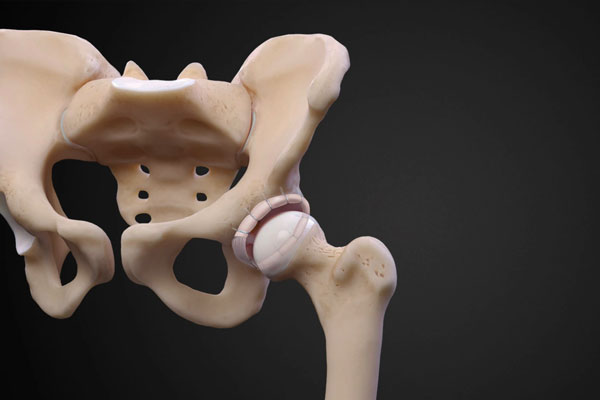Osteotomy of the Hip
The hip joint is formed where the round head of the thighbone (femur) joins the pelvic bone. The hip joint is extremely strong and amazingly flexible; it can bear weight and allow a wide range of movement. Deformities or changes in the orientation of either the pelvis or the femur can disrupt the freedom of movement of the joint and cause severe pain and discomfort. In order to correct the hip deformity, especially in younger patients, a surgeon will suggest a hip osteotomy.

What is a hip osteotomy?
Hip osteotomy is a surgical procedure to correct the deformity of the hip bones. The surgeon will cut the bones of the hip joint, reshape them, and shift them into a better alignment. A healthy cartilage is placed in the weight-bearing area of the joint thus relieving some pressure on the affected joint.
Femoral osteotomies and peri-acetabular osteotomies are the two most commonly performed hip osteotomies. Femoral osteotomy is the corrective surgery performed on the ball side of the hip, and the peri-acetabular osteotomy is performed to correct the deformity in the curved portion of the pelvis.
When is hip osteotomy recommended?
The surgery is often recommended for patients who are too young for hip joint replacement surgery. Conditions that are treated by a hip osteotomy are:
- Congenital disorders such as cerebral palsy, which causes abnormal muscle contractions.
- Arthritis limited to a small area of the hip joint.
- Mechanical or structural disorder of the hip, such as hip impingement.
- Developmental dislocation of the hip joint, such as hip dysplasia.
- Other injuries or illnesses of the hip, such as Legg-Calve-Perthes disease (a childhood disorder characterized by disrupted blood flow to the femoral head).
What is the pre-procedure care?
A surgeon will recommend imaging tests like X-rays or ultrasound scans to diagnose the extent of the deformity. The surgery is planned based on the scans of the hip joint obtained from these imaging tests. Once the surgery is planned, you will be given a set of instructions to avoid complications during and after the surgery. These instructions include:
- Stop using some drugs, such as aspirin and ibuprofen, for a while.
- Avoid eating and drinking after midnight the night before surgery.
- Eat dinner and drink before midnight the night before surgery.
How osteotomy of the hip is performed?
For hip osteotomies, the patient should be admitted to the hospital one day prior to the surgery. The anesthesia team will examine the patient and finalize the type and dose of anesthesia for the procedure. The hip osteotomy technique is typically carried out under general anesthesia, which keeps the patient asleep throughout.
Once the patient has been anesthetized, the surgeon will make a few incisions to expose the hip joint. A wedge-shaped piece of bone may be removed and moved to a new and better location within the joint. These cuts will reshape the bone to fit itself in the new position. A metal plate or screw will be inserted to fix the bone in its new place. Once the procedure is complete, the surgeon will close the incision area with stitches.
What is the post-procedure care?
The hip osteotomy procedure requires a hospital stay of 4-5 days. Antibiotics and painkillers will be administered through an intravenous line (IV) placed in the arm vein, which will be removed in 2-3 days. The patient must take complete bed rest during the hospital stay. It is important to keep the leg in an elevated position while resting to avoid swelling near the incision area. Physical therapy will begin during the hospital stay, where the therapist will instruct gentle exercises and also train the patient to use crutches.
To ensure a smooth recovery at home, the surgeon will give the following recommendations:
- Use crutches or a walker to keep the hip joint from bearing the full weight of the upper body for about eight to 10 weeks.
- Keep the stitches and bandages (if any) dry and clean to avoid infections.
- Perform the exercises to restore movement and strengthen your hip muscles as recommended by your physiotherapist.
- Have regular follow-up visits to check the progress.
Outlook
Hip osteotomy is one of the successful correction surgeries that improves gait and reduces pain in the hip joint. It is widely recommended to correct some conditions like hip dysplasia and hip impingement. The surgery extends the life of the hip joint in younger patients and will delay hip replacement surgery.